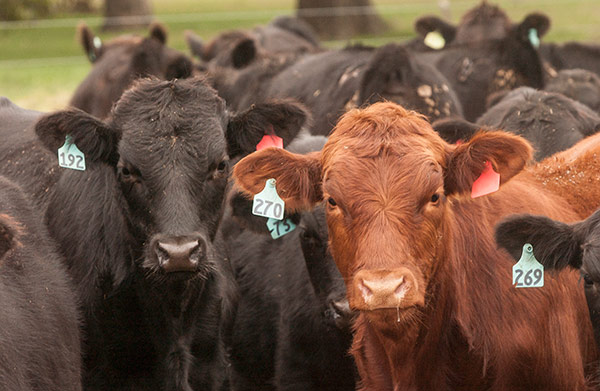
Agricultural News
Expenses Add Up when Raising Replacement Heifers
Tue, 01 Oct 2013 11:46:57 CDT

Job Springer, Agriculture Economist Consultant with the Samuel Roberts Noble Foundation, writes in their latest newsletter:
The Southern Great Plains has seen better forage growing conditions in 2013 than in many recent years. This has been, in part, due to less wind, cooler temperatures and more rainfall. Many ranchers are beginning to chomp at the bit to use these additional forages and are thus looking to rebuild their cow herds. For ranchers looking to rebuild their herds from within the ranch, the question arises as to how much it will cost to raise their own replacement heifers. While every ranch has its own set of unique resources, this article addresses the question of how much it will cost an average-sized ranch in the Southern Great Plains to raise replacement heifers in 2013 and 2014.
According to the 2007 Census of Agriculture, the average herd size in the Southern Great Plains is approximately 43 head. A rancher trying to expand his herd will need to exceed the typical attrition rate of 17 percent (seven head). In this example, 14 heifers will be used as the initial selection number of potential replacement females.
Replacement heifers need to be approximately 65 percent of their mature weight at the time of breeding. Therefore, a typical herd in the Southern Great Plains would see heifers being bred around 750 pounds. This is a pivotal point when the rancher can either sell a feeder heifer or decide to keep the heifer on the farm as a replacement A spring-calving cow herd will see many heifers being covered as early as March or April. According to the futures market, these 750-pound heifers would be worth $151 per hundredweight or $1,132.50 per head.
During the next nine months, several operating costs will be incurred by the ranch, including use of owned or leased forage at $162 per heifer; supplemental feed when standing forage is limited or requires supplementation at $79.20 per heifer; free-choice mineral at $39.15 per heifer; pre-breeding vaccinations, fly control and dewormer at $8 per heifer; a 1 percent death loss at $14.24 per heifer; sickness at $1.25 per heifer; a pregnancy test at $6 per heifer; labor at $207.92 per heifer; breeding bull's annual depreciation at $36.79 per heifer; and the annual cash expenses associated with the bull at $42.86 per heifer. The accumulated expenses so far are $1,729.91 per heifer.
Other expenses are incurred to the ranch when replacement heifers are raised on the ranch. These expenses include a loss on replacement heifers that were not bred or abort at $48.34 per heifer; utilization of ranch resources during the year a replacement heifer is raised instead of running productive cows at $112.50 per heifer (raising replacement heifers, instead of purchasing, displaces productive cows or other livestock); and a forgone implant at weaning of heifer calves that would have added weight and value had the heifer been sold at $46.30 per heifer (replacement heifers should not be administered an implant).
When all expenses are considered, the average-sized ranch in the Southern Great Plains will have approximately $1,937 tied up in each productive replacement heifer produced on the ranch in the coming year. Many ranchers have experienced sticker shock when they have priced replacement heifers from other ranches. However, if a rancher is able to locate replacement heifers elsewhere at a lower price, it would be worth considering the outside purchase, depending on the goals of the operation.
A similar evaluation should be made on your respective operation to determine whether or not it makes economic sense to raise or purchase quality replacement heifers.
WebReadyTM Powered by WireReady® NSI
Top Agricultural News
More Headlines...




















